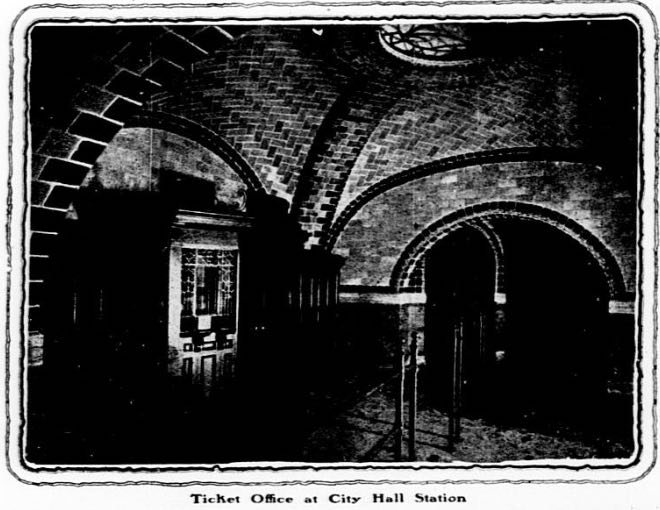
Have you ever wondered how the New York City’s subway was built or why they decided to build it? I certainly have each and every time I’ve visited the big city. Here is the big subway announcement that was made in a 1912 newspaper.

Mightiest Transit System Under City’s Feet
New York, July 27. — A great army of workmen is preparing to dig away the dirt from beneath the thousands of skyscrapers that press down upon Manhattan island, in order to sink into its bowels the greatest municipal transit system ever attempted in the world’s history.
At the end of five years of driving, unceasing labor, the inhabitants of New York will be able, as a result, to ride beneath the surface of the earth over 500 miles of track in dark, winding tubes that cost to carve out and equip the sum of $350,000,000 — almost as much as we have spent to build the Panama canal!
No one can understand the full marvel of this undertaking unless the topography affected is made familiar.
One must understand that Manhattan island, upon whichNew York rears its high held head, is just a low piece of ground, not much higher than the level of the sea water that washes it on every side and that it is but twelve miles long and two miles wide.
Then one starts to realize that the introduction of several hundred miles of underground trackage in this tiny space means little less than the hollowing out of the whole of New York’s foundations!
Engineers, scores of them, have pored over these new subway plans for months, trying to evolve a scheme of tubings that will care adequately for the city’s human traffic and which will not, at the same time, endanger the scores of great, solid buildings that are made up of thirty or forty stories of granite, steel and concrete.
And the “H” plan has, at last solved the problem.
By this scheme continuous subway lines are to traverse each side of the island, far enough away from the coast line to be safe from seepage from rivers and bays, and yet not close enough to the backbone of Manhattan to be directly under the largest buildings — located in the section bounded by Broadway and Fifth avenue. This would not do, as there is already one tube running in this location and more might weaken the resistance of the earth, causing a terrible catastrophe.
There will be a cross-town subway connecting these two lines at the center and various extensions to outlying centers of traffic, including the new Pennsylvania station on Seventh avenue.
From Brooklyn bridge two new lines are going to be carried under the river, making Brooklyn “closer” than ever to New York. These lines will be four-tracked, two for express trains and two for “locals.” The latter stop every six blocks, while the express trains run by a mile of stations without pause. Some of the trains will run up onto elevated tracks at the subway terminal and carry suburban passengers out on Long Island as far as Jamaica.
The cost of building this great rapid transit system will be divided into three parts and will be borne by the city and by the two companies which will operate the trains — the Interborough Traction Co. and the Brooklyn Rapid Transit Co. The Public Utilities Commission of the city will have entire charge of the work, letting contracts and supervising all construction.
The companies will have nothing whatever to say until the tubes are completed and turned over to them for equipment and operation. At the end of ten years the city will take over the system by meeting certain specified payments. In the meantime, in return for franchise privileges, a certain small percentage of the gross earnings above a certain figure is to be paid over to the city.
Source: The Day Book (Chicago, Illinois newspaper). July 18, 1912.

